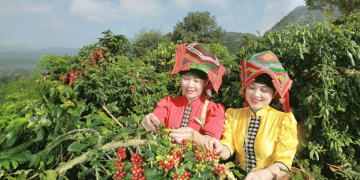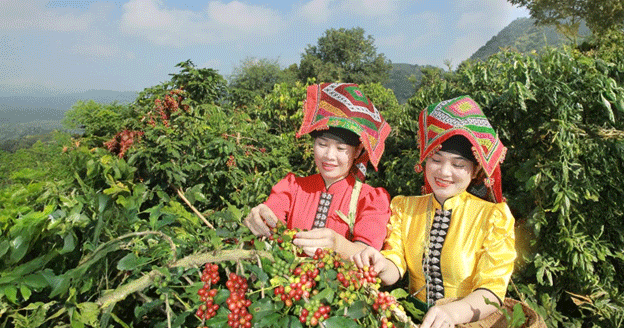The integration of agriculture with agro-processing industries has become a key focus for the sector’s modernization. In Sơn La province, which boasts over 350,000 hectares of agricultural land, the development of specialized raw material zones has transformed traditional farming into a more structured and profitable industry.
With suitable climate and soil conditions, Sơn La has prioritized creating high-quality raw material zones to support processing facilities. These efforts align with the province’s goals to enhance productivity, ensure sustainable practices, and increase farmers’ income while boosting the competitiveness of agricultural products.
High-Value Zones Through Strategic Partnerships
Mai Sơn District: Technology-Driven Agriculture
In Mai Sơn, a coordinated effort among farmers, cooperatives, and enterprises has established high-tech agricultural practices. Farmers adhere to strict cultivation standards to meet the quality requirements of processing facilities. Companies supply seeds, fertilizers, and technical support, ensuring consistency in product quality.
Sông Mã District: Optimizing Land for Efficiency
Sông Mã has transitioned underutilized or low-efficiency lands into raw material zones. Partnerships between farmers and businesses are formalized through contracts, wherein companies provide inputs and technical guidance, and farmers commit to delivering high-quality produce. This model has successfully integrated production and processing, creating a stable supply chain.
Success Stories in Sugarcane and Maize
Công ty Cổ phần Mía Đường Sơn La (Son La Sugar Company) has developed over 10,000 hectares of sugarcane fields, benefiting nearly 10,000 farming households. Through investments in seeds, fertilizers, and technical assistance, the company has ensured stable incomes for farmers and a consistent supply of raw materials for its facilities.
Similarly, Công ty Cổ phần Nông Nghiệp Chiềng Sung has turned maize cultivation into a high-income activity for local farmers. By contracting over 500 hectares for hybrid maize production in 2024, the company guarantees markets for farmers while meeting industrial needs.
The Role of Technology and Certification
Sơn La’s agricultural success also hinges on modern practices and certifications. Over 100 local enterprises adhere to VietGAP and GlobalGAP standards, ensuring compliance with global food safety and sustainability requirements. Furthermore, the province has allocated over 3,000 hectares for export-ready crops like coffee, tea, and fruits, expanding markets in Australia, Europe, and Asia.
Processing infrastructure has also advanced significantly, with 17 processing plants and over 500 smaller facilities operating across Sơn La. For example, the Doveco Sơn La Processing Center supports 1,300 hectares of raw material zones and processes diverse crops like pineapple, spinach, and sweetcorn. Its annual production capacity exceeds 50,000 tons across frozen, canned, and dried product lines.
Sustainable Growth Through Multi-Stakeholder Collaboration
The success of Sơn La’s raw material zones stems from a collaborative model involving four key stakeholders:
- Farmers: Provide land and labor while adopting modern agricultural practices.
- Enterprises: Supply resources, technical guidance, and guaranteed markets through contracts.
- Government: Formulate supportive policies and coordinate land use.
- Researchers: Develop and transfer innovations for higher yields and quality.
This holistic approach ensures that benefits are shared across the value chain, fostering long-term sustainability.
Building raw material zones tailored for agro-processing is more than an agricultural trend; it’s a necessity for sustainable development. The Sơn La model demonstrates how aligning farmers, enterprises, and government can create a robust system that benefits all. Expanding these practices to other regions could pave the way for a globally competitive agricultural sector.
































